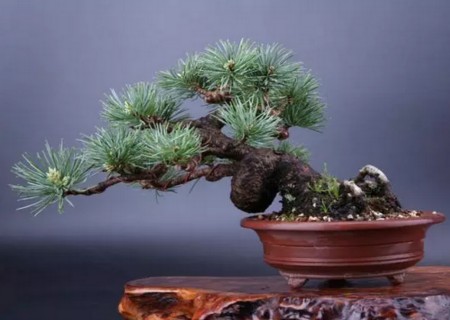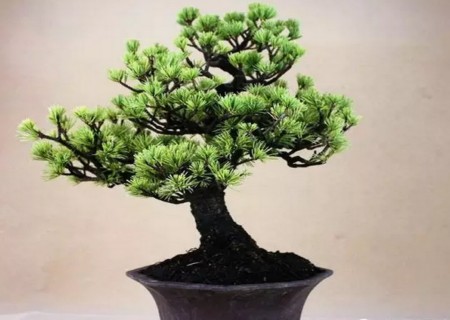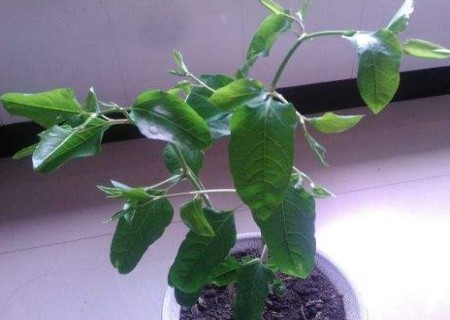Fertilization method of five-needle pine bonsai
This tree species is one of the more valuable five-needle pine, generally as a bonsai selection, ground planting is rare. Five-needle pine does not require high fertility, fertilization should not be too much and too thick, too much fertilization will make shoots grow, needles longer, hindering ornamental value.
Five-needle pine is more cold-resistant, shade-resistant and likes slightly acidic soil with good drainage, but fertilization is the key to raising five-needle pine bonsai, which can be combined with watering. After waiting for the five-needle pine to take shape, do not apply too much fertilizer, otherwise it is easy to hurt the root. In addition, we should pay attention to the five-needle pine shade after fertilization, do not let the sun exposure.

Five-needle pine bonsai fertilization should be less, in the case of lack of fertilizer and water control, it can grow into an old posture. Light fertilizer should be applied in fertilization, and cake fertilizer is the best. The time should be after autumn and before sprouting, and fertilization should be avoided in the first season. If more fertilizer or thick fertilizer is applied, it is easy to damage the root system. The application of base fertilizer in winter has the effect of preventing cold. Topdressing is applied before sprouting in spring, mainly potassium and phosphorus, which is beneficial to strong root stem.
The method of thin fertilizer and less fertilizer should be used for five-leaf pine, and fully mature bio-organic fertilizer (Guoguang active source) should be applied. From spring to early winter, fertilize every three to four weeks. The weather is hot from July to August, so 10% thin fertilizer and water should be applied once every half month.
Fertilization for mature plants should be carried out in spring and autumn: spring fertilizer is applied every 10 days for 3 months before germination, with a concentration of about 15%, in order to promote germination and branch growth. The weather is hot from July to August, 10% dilute fertilizer and water should be applied once every half a month, and the application should be carried out in the morning and evening. September is the fastest thickening and growth stage of five-leaf pine, and the special compound fertilizer for garden plants (Guoguang Yuyang fertilizer) can be properly applied so that there are enough nutrients for stem and branch growth. Fertilizer should be stopped after the end of October.
Generally speaking, only two fertilizers are applied during the growth period of spring and autumn, organic liquid fertilizer (cake fertilizer and water) is applied before germination or after thick leaves in spring, and thicker fertilization can be applied appropriately in autumn to promote robust growth. Stop fertilizing after October.
Five-needle pine is resistant to barren and should not be fertilized more. More fertilization or concentrated fertilizer is easy to damage the root system, high temperature season is not suitable for fertilization, serious cases can cause the death of trees. The needles can be shortened by controlled fertilization, and the needles will be longer, usually in spring, once or twice each. Fertilization was even less in the year when it was planted in pots.
In addition, fertilization depends on the weather conditions. For example, it is not suitable to apply fertilizer immediately if it is sunny for a long time; if it is sunny for a long time, it should be watered first, and fertilize after 2 Mel for 3 days. Regular spraying of foliar fertilizer containing trace elements (Sitalin + Yuyang compound nitrophenol sodium) can enhance the landscape effect and resistance of five-leaf pine.
Time: 2019-06-09 Click:
- Prev

Watering skills of five-needle pine bonsai
The five-needle pine has a good posture and is a tree species with high ornamental value. it is not only suitable for garden decoration, but also an important tree species for potted plants or bonsai. Bonsai production should maintain a good tree posture, control the growth of branches and leaves, and achieve the shape of short, dense and vigorous branches and leaves. Today, the editor will introduce to you the watering skills of five-needle pine bonsai.
- Next

How to reproduce Paeonia lactiflora
Paeonia lactiflora has a wide range of uses, the most important of which is to be used as open-ground perennial flowers. Because it has the characteristics of color, fragrance and rhyme, Chinese classical gardens are often decorated with peony planted in rockery trees. Paeonia lactiflora not only can be planted in the ground, but also can be used as a material for potted and cut flowers. When the flowers bloom, pick a few.
Related
- Fuxing push coffee new agricultural production and marketing class: lack of small-scale processing plants
- Jujube rice field leisure farm deep ploughing Yilan for five years to create a space for organic food and play
- Nongyu Farm-A trial of organic papaya for brave women with advanced technology
- Four points for attention in the prevention and control of diseases and insect pests of edible fungi
- How to add nutrient solution to Edible Fungi
- Is there any good way to control edible fungus mites?
- Open Inoculation Technology of Edible Fungi
- Is there any clever way to use fertilizer for edible fungus in winter?
- What agents are used to kill the pathogens of edible fungi in the mushroom shed?
- Rapid drying of Edible Fungi

